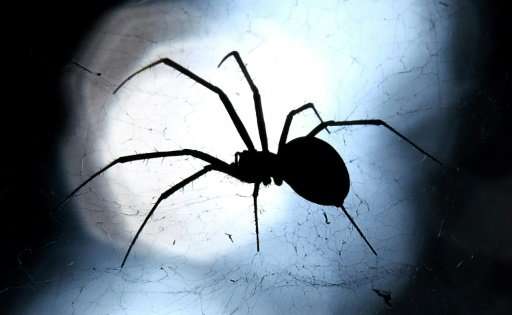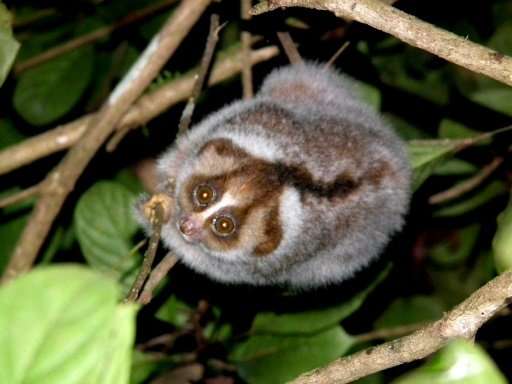Nature's nastiest beasts on show in London

From a hairy-legged Goliath spider to a 2.5-foot (0.7-metre) Komodo dragon, a fear-inducing exhibition opens Friday at London's Natural History Museum showcasing the world's most venomous creatures.
More than 200,000 venomous species live on land, in the air or in the sea—including the huge living spider that welcomes visitors to the museum from inside its tank.
"It's not dangerous, it's one of the biggest misconceptions. The little spider here is far more dangerous," explained venom specialist Ronald Jenner, pointing to a tiny "violinist spider", whose bite can cause necrosis and infection.
Even cuddly creatures such as the loris, a small primate from Asia with large innocent eyes, are not what they seem, packing poisonous glands on their arms that they lick before biting rivals.
It is one of the few venomous mammals, with others including the male platypus, which has poisonous spurs on its hind legs.
Venom refers to the toxic substances secreted by animals to kill their opponents, but it has other uses.
Defence, attraction and sex
"Ants use it for predation, defence, and some species use it in a sex ceremony, the female ant flies away and the smell of the venom attracts the male," said Jenner.
"They use it to lay trails if they find food, they use it as an alarm. So it's a multifunctional Swiss army knife."

The toxic proteins can induce a range of disagreeable and occasionally violent reactions, including chills, nausea, fainting and paralysis.
The show, which runs until May 13, also pays tribute to the masochistic efforts of scientist Justin O. Schmidt, who let himself be stung by more than 80 species to establish a scale of pain.
From the relatively mild sting of the red ant, described as "live" and "sudden", to that of the warlike wasp, which has been called true "torture", the Schmidt index is given for each species in the exhibition.
In a gloomy alcove, visitors can hear the chilling testimonies of those who got on the wrong side of toxic beasts, including a woman chased and stung by hundreds of bees, a man bitten by a spearhead, one of the most terrible serpents of central America, and another man attacked by a Russell's viper in India.
Britain generally gets off lightly, but visitors are warned to guard against bees, ticks, weever fish (a poisonous sea-water fish) and vipers, an example of which is displayed, having died while devouring a lizard. A just revenge for his victim.
© 2017 AFP




















